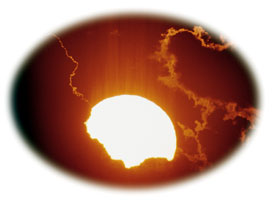This investigation will help you to:
The Energy Story, The California Energy Commission
Explore the variety of ways energy can be measured.
Measuring Energy Usage, NTEP
This site provides information on how to measure the amount of electricity your appliances use.
Energy Units and Conversions, California Energy Data
Find out about units used for measuring energy and power.
The Hubbert Peak for World Oil, Hubbert Peak of Oil Production
Reseach the amazingly prescient prediction regarding the patterns of discovery and depletion of the world's petroleum resources.
Key World Energy Statistics, International Energy Agency
This Adobe pdf publication provides useful statistics in the forms of charts, graphs, and reports regarding the world-wide use of fossil fuels since the 1970.
Coal Information, Kentucky Geological Survey
This page provides a series of links to aid your research into this topic (i.e., What is coal?, How is coal formed?, What are the components of coal?)
How Fossil Fuels Were Formed, DOE
This site offers a basic explanation of coal formation on a geologic time scale
Coal Resource Recoverability, U.S. Bureau of Mines
This online circular reviews the factors associated with coal production, including mining, cleaning, recoveries, etc. It also includes tables and figures to illustrate key concepts and examples.
Coal Resource Classification System of the U.S. Geological Survey - Geophysical Logs as a Source of Coal Bed Data, USGS
This article explains how geophysical techniques can be used to identify coal beds and to quantify their resources. It includes examples and explanations of geophysical logs.
Coal Mining and Transportation, DOE
Fossil Energy DOE Site reviews coal mining techniques.
U.S. Coal Supply and Demand, EIA - DOE
Find out more about current coal production in the US.
USGS Tracks Acid Rain, USGS
This article defines acid rain and explains how acid rain forms and what impacts it has on the environment.
Coal Resources in Environmentally-sensitive Lands Under Federal Management, USGS
This online report presents estimates of coal-bearing acreage and coal tonnage in environmentally-sensitive areas and explains how these areas are dealt with. It includes plates that give detailed examples.
Coalbed Methane--An Untapped Energy Resource and an Environmental Concern, USGS
This site looks at the potential of using coalbed methane as an energy resource, but also considers the environmental implications associated with removing the methane from the ground.
Fossil Fuels, Penn State University
Reviews how hydrocarbon deposits (including oil and gas) form in list format.
An Index of Early Petroleum History Sites, by Blake Malkamaki
This site contains a list of petroleum history links, ordered by state.
Economics and the 1995 National Assessment of U.S. Oil and Gas Resources, USGS
This online fact sheet reviews the status and location of United States onshore and offshore oil and gas resources as of 1995. It includes information about known oil and gas fields, as well as estimates of undiscovered reserves and the costs and methods associated with finding these reserves.
A Summary of the U.S. Geological Survey 1995 National Assessment of Oil and Gas Resources, USGS Fact Sheet
Fact sheet summarizes the findings of the 1995 National Assessment of Oil and Gas Resources, with a focus on undiscovered reserves.
Oil Slickers: How Petroleum Benefits at the Taxpayer's Expense, Institute for Local Self-Reliance Research
The additional costs that you may not be aware of, that incur with petroleum use.
Arctic National Wildlife Refuge, Arctic Power
Read more about the politics behind drilling in the Arctic National Wildlife Refuge.
Origin of Natural Gas Accumulations, The Franklin Instititue
This article offers a more-detailed look into the generation of natural gas accumulations as well as migration.
About Natural Gas, American Gas Association
This site provides a good overview of natural gas and also provides links to find out about gas in your state.
Charts and Graphs, National Gas Asso.
This site offers reports, videos, charts, graph and information regarding natural gas consumption, reserves, etc.
Natural Gas: Fueling the Blue Flame, US Dept. of Energy
Begin your exploration by visiting the "gas" header at the top to learn what natural gas is, where it is found, and its production.
Natural Gas Distribution System, California Energy Commission
Learn more about the huge network of pipelines that bring natural gas to Californina customers.
Natural Gasp Production and Distribution, U.S. Department of Energy
Read this article to explore gas distribution and production patterns.
Benefits of Natural Gas, American Gas Foundation
Learn why and if using natural gas in place of other fuels can help ease a number of environmental concerns.
New Landscape for Natural Gas Supply and Pricee, American Gas Foundation
Some say the natural gas resource base in North America is vast and diverse, yet others say it is too finite to count on. Read this article to learn more on this topic.
Nuclear Energy - Fission and Fusion, California Energy Commission
This site provides the basics about nuclear energy. It also includes links to other useful web sites at the bottom of the page.
Uranium Facts, Argonne National Labratory
Site uses an illustration to explain the nuclear fuel cycle and includes several facts about uranium and its use as a source of nuclear power.
Radioactive Waste, U.S. Nuclear Reglatory Commission
Learn more about low-level and high-level nuclear waste.
What are nuclear wastes and how are they managed?, World Nuclear Association
Read more about Nuclear waste.
Benefits of Nuclear Energy, University of Melbourne
This site explores four beneficial attributes of nuclear energy.
No Nukes Info Source, Austrian Institute for Applied Ecology
This web page offers a collection of new stories about serious incidents in nuclear power plants. You can search reports by reactor type and country.

